Rotala rotundifolia
Scientific name: Rotala rotundifolia
Family: Lythraceae
Usual maximum size in aquariums: 40 - 60 cm (15.75 - 23.62 inch)
014
Recommended pH range for the species: 5.8 - 7.9
Recommended water hardness (dGH): 4 - 18°N (71.43 - 321.43ppm)
0°C 32°F30°C 86°F
Recommended temperature: 18 - 30 °C (64.4 - 86°F)
Reproduction of the plant: Runners
Origin (in the wild): South Asia
How fast these plants grow: Fast
Recommended substrate: Gravel
Demands on lighting: Bright
Ideal placement in a fish tank: Background
Family
Lythraceae
Planting Area
Rotala rotundifolia is versatile in its placement within the aquarium, suitable for both midground and background areas. In smaller tanks, it can create a lush backdrop, while in larger aquariums, it serves as an ideal midground plant. Its vibrant coloration and bushy growth make it a focal point wherever it’s planted. Consider positioning it where its growth can be easily managed and its colors can be highlighted by the surrounding plants.
Propagation
Propagating Rotala rotundifolia is simple and effective, often achieved by replanting the trimmed tops into the substrate. This method encourages a fuller, denser appearance, which is desirable for creating a bushy, vibrant look in the aquarium. Due to the delicate nature of the stems, it’s recommended to handle them gently during planting. Utilizing aquarium plant tweezers can greatly reduce the risk of damage to the fragile stems.
Once well-established, Rotala rotundifolia will naturally propagate by sending out runners. These runners, once they develop their own root systems, can be carefully cut and relocated or shared with other aquarists.
Difficulty
Rotala rotundifolia is an ideal plant for aquarists of all skill levels, particularly beginners. It adapts well to a variety of water conditions and temperatures, making it a reliable choice for diverse setups. If you’re seeking a low-maintenance red plant that enhances the visual appeal of your aquarium without requiring intensive care, this species is an excellent option.
Short Description
Rotala rotundifolia is one of the more resilient species within the Rotala genus, making it a popular choice among aquascapers for its aesthetic versatility. While it thrives under higher lighting conditions, which bring out its striking red hues and larger, rounder leaves, it can still grow well under moderate lighting, albeit with a greener coloration and narrower leaves.
This plant also adapts well to outdoor ponds in warmer climates and can grow emersed in swamps or marshes, which are its natural habitats. Its adaptability and ease of growth make it a favored species for creating stunning aquascapes.
Maintenance
Though not particularly demanding, Rotala rotundifolia does benefit from a regular supply of nutrients. To achieve its best coloration, especially the desired bright red, consider incorporating a CO2 system into your setup. Experimenting with different levels of light, nutrients, and CO2 can result in a variety of attractive colorations. For optimal red hues, maintain low nitrate and high phosphate levels in the water.
This fast-growing plant requires frequent trimming to prevent it from overshadowing lower leaves, which can occur if it reaches the water’s surface. Regular trimming also encourages more vigorous growth and prevents the lower parts of the plant from losing light. If left untrimmed, the plant may even produce small purple flowers when it reaches the surface. Don’t hesitate to prune aggressively; Rotala rotundifolia will quickly bounce back with lush new growth.
Important: As Rotala rotundifolia is considered an invasive species, any trimmings should be disposed of responsibly to avoid accidental introduction into natural waterways, where it could disrupt local ecosystems.
Final Note and Credit
For successful propagation, replanting trimmings is a reliable method. While this plant generally has moderate lighting requirements, providing ample light will enhance its coloration, especially the bright reds.
Content was updated on 10th January 2016, thanks to Aquariadise.com.

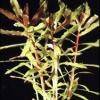 Ammania gracilis
Ammania gracilis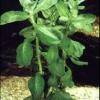 Ammania senegalensis
Ammania senegalensis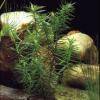 Didiplis diandra
Didiplis diandra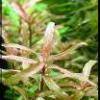 Nesaea crassicaulis
Nesaea crassicaulis Rotala indica
Rotala indica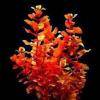 Rotala macrandra
Rotala macrandra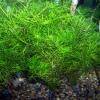 Rotala nanjenshan
Rotala nanjenshan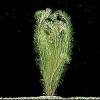 Rotala wallichii
Rotala wallichii